Teaching the six syllable types can help students decode words. This paves the way to reading fluency!

Why Syllable Types Are Important
Most words in the English language follow the rules. They can be decoded (or “sounded out”).
There are a few exceptions, of course. These are called sight words (like choir, does, said, and people).
Sight words must be memorized so that a student can recognize them by sight.
Other words can be read using decoding skills.
When a student has those skills, he can read unfamiliar words. This is an essential step toward reading fluency.
How to Teach Syllable Types
Before you teach the syllable types, the student needs to be able to say the sounds of the letters quickly and accurately.
He needs to know the difference between vowels and consonants.
Then, you need to teach the student about syllables. (In short, a syllable has only one vowel sound.)
He needs to be able to hear where a word breaks into syllables.
For example, shine and bay have one syllable.
Mo-tion and lem-on have two syllables.
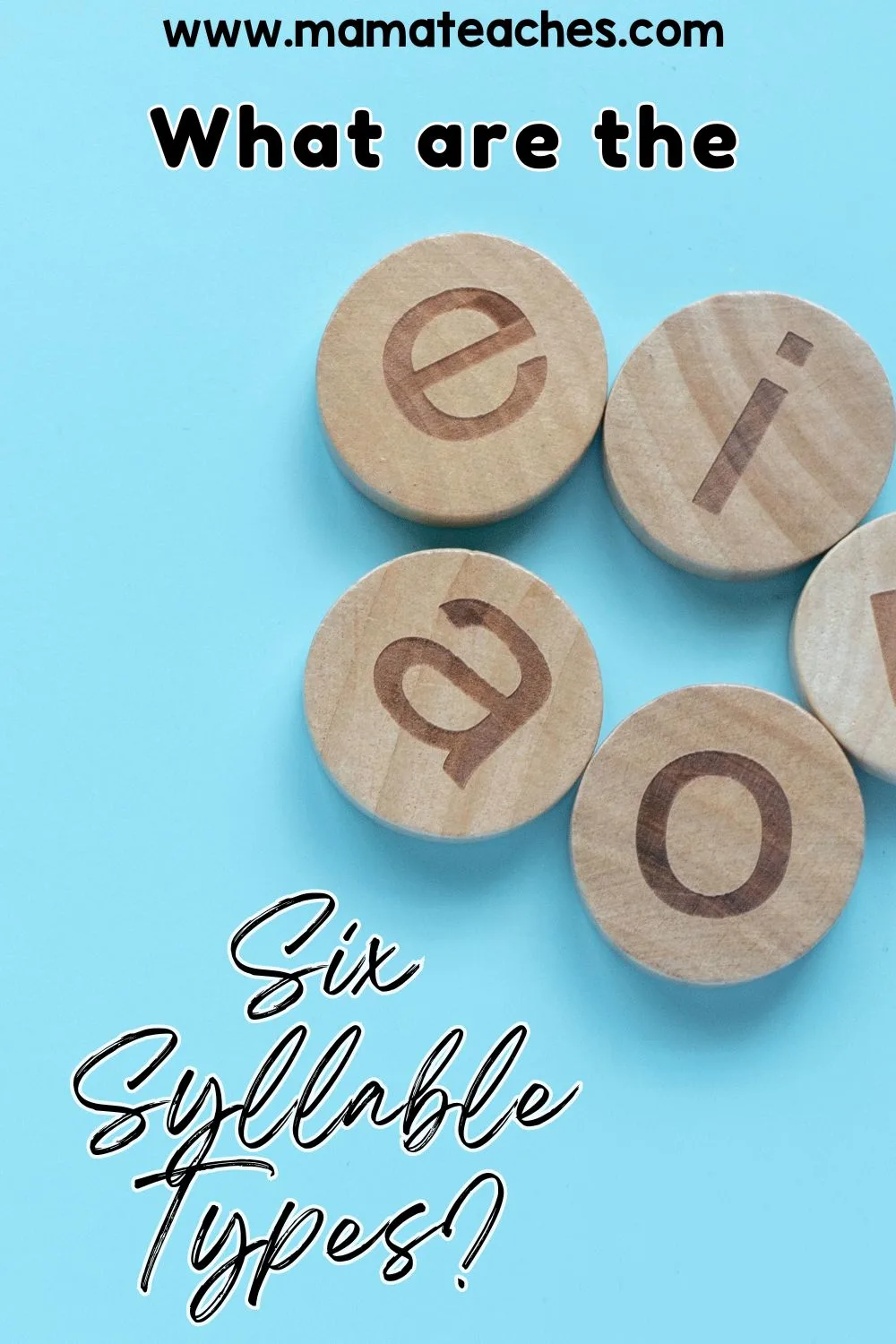
This article contains affiliate links to things that you might like.
The Six Syllable Types
Here are the six syllable types that appear time and again in words.
Learn the six syllable types and how to teach them to students.
Closed Vowel Syllable
This is the most common syllable type.
In the closed vowel syllable, a consonant sound stops the vowel (or closes it).
Think about the word cat. The short vowel sound of “a” is stopped by the consonant sound of “t”.
You can find closed vowel syllables in single-syllable words: on, math, and stump.
Closed vowel syllables always have short vowel sounds. They are the syllable type in CVC words. (These are the first words kids learn to read.)
You can also find closed vowel syllables in multi-syllable words (the closed vowel syllable is in bold):
mess-y
a-kin
cham-pi-on
As you read with the student, you can help her decode this syllable by showing two fingers (ASL “v” for vowel).
Then, place your other hand on top of the V to close it off.
You can teach a chant to help students remember that closed vowel syllables are short.
Do the above motion and say the short vowel sounds (these are the sounds of a, e, i, o, and u in ad, Ed, in, on, and up).
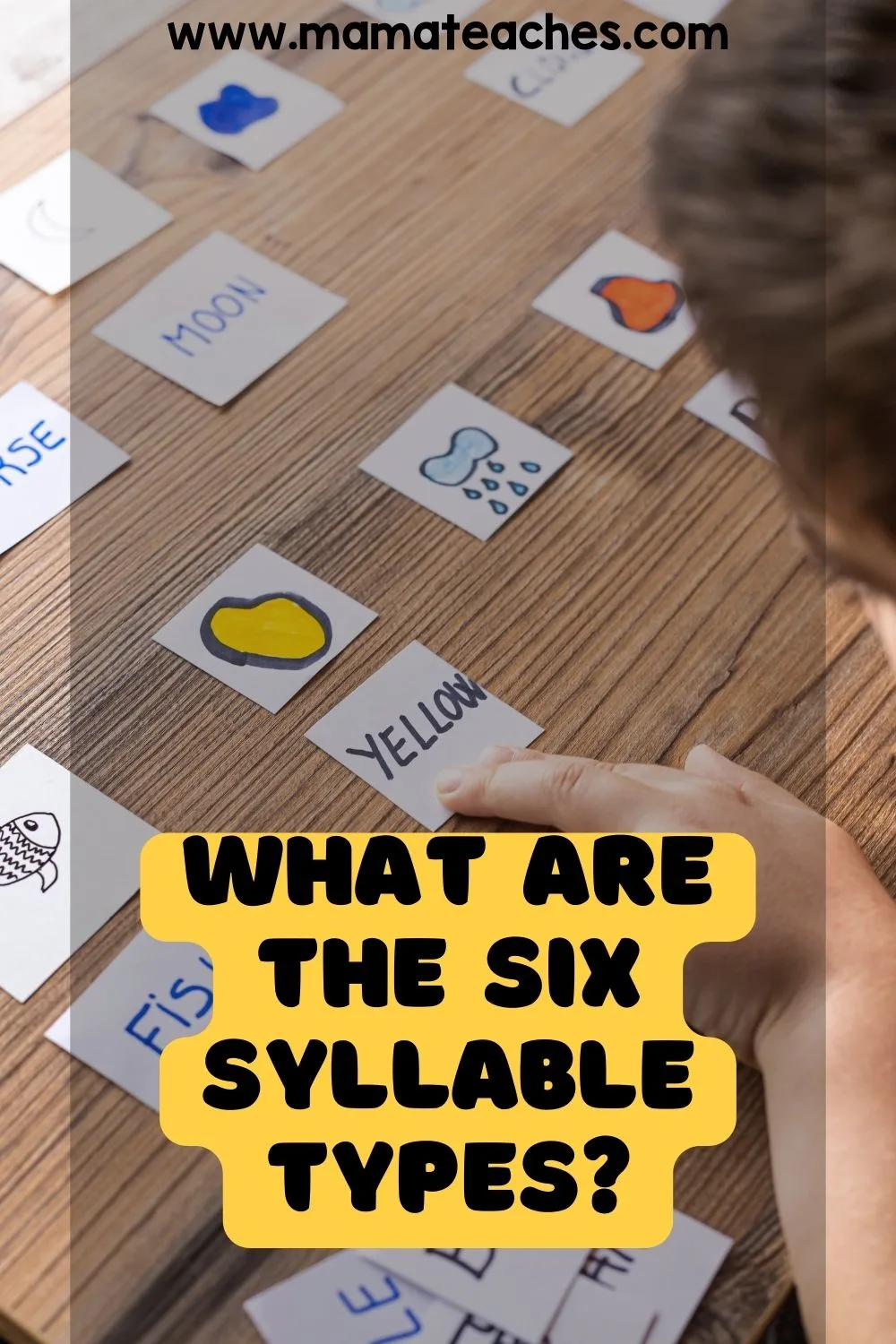
Open Vowel Syllable
An open vowel syllable stays open and is not blocked.
An open vowel always makes the long vowel sound.
You can hear this syllable type in words such as hi, me, and no.
Multi-syllable words with open vowel syllables include:
ma-son
no-tice
may-be
Use the ASL “v” sign and slide your hand to the left.
Teach the chant of the long-vowel sounds as you do this: a, e, i, o, and u (the sounds of the vowel in able, eve, ice, open, and unicorn).
Silent E Syllable
The silent e is often called the magic e or the sneaky e.
Its presence at the end of the syllable changes makes the vowel say the long vowel sound.
chime
de-vice
frame
un-der-line
You can show the symbol of one hand making the ASL “v” and the other hand by its side making the ASL “e”.
(The ASL “e” involves folding the fingers of the hand against themselves.)
Slide both hands to the left to indicate the long vowel sound and chant the long vowels.
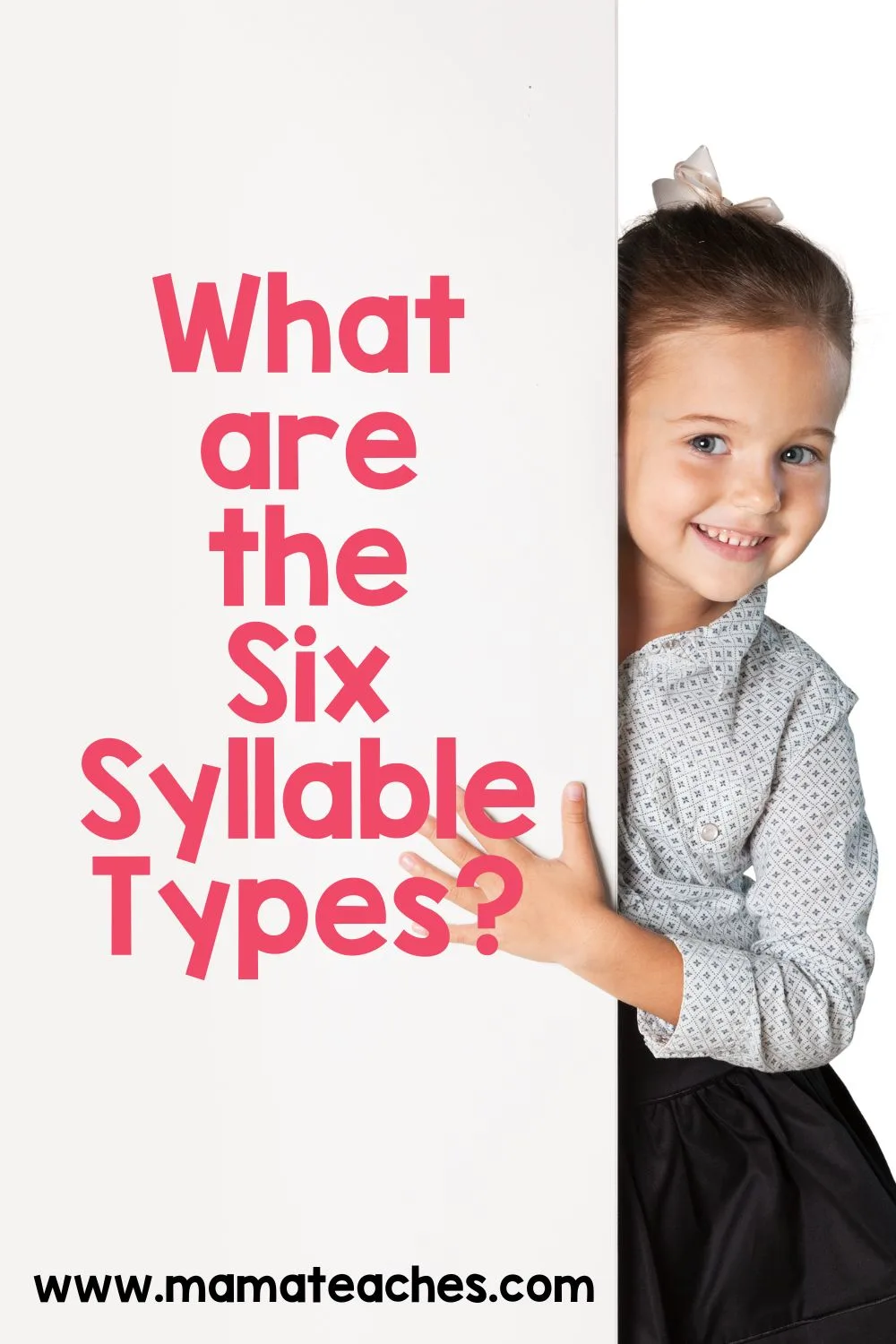
Vowel Pair Syllable
A vowel pair involves two vowels side-by-side that make one vowel sound together.
These are sometimes called vowel teams or vowel digraphs.
Here are some examples:
play
rea-son
cloud
mush-room
Teachers often chant, “When two vowels go walking, the first does the talking.”
This indicates that it is the first vowel that expresses the sound.
Although this is usually true, it does not always hold (e.g., belief).
You also have to watch out for words like diet, oasis, and poem that may look like they have vowel pairs but are actually multi-syllabic.
R-Controlled Vowel Syllable
The presence of the letter “r” after a vowel or vowel pair changes the sound of the vowel.
It controls the vowel sound.
“Ar” makes a unique sound, as does “or.”
“Er”, “ir”, and “ur” all change to the same sound. You can hear it in her, fir, and purr.
Although the r-controlled vowel sounds must learned one by one, you can teach the last three in a group.
Hold up the ASL “v”, hook it with your other pointer finger, and drag the “v” along.
Say: “E-r, i-r, u-r…ur, ur, ur.”
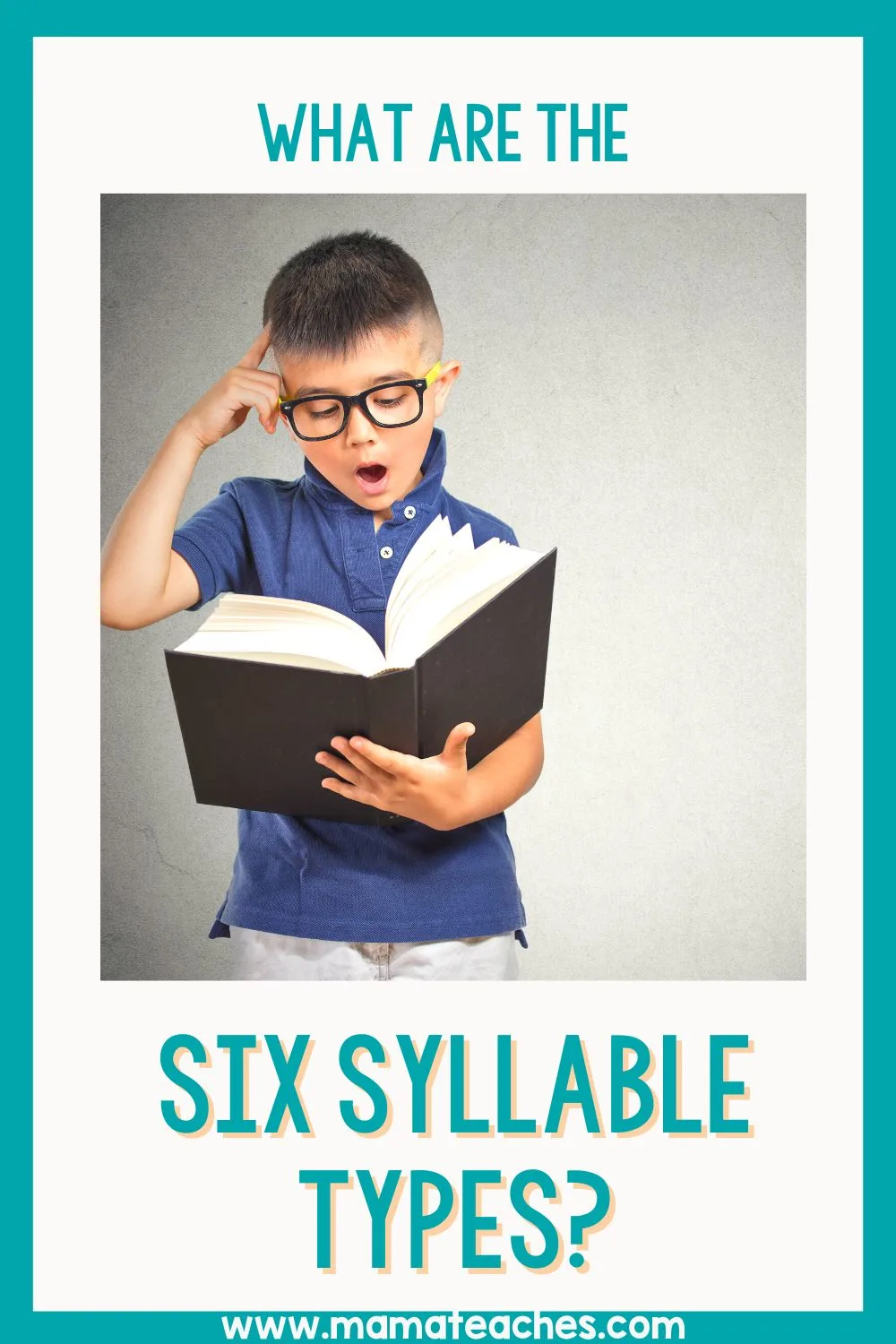
-LE Syllable
Multi-syllable words that end with a consonant plus the letters “le” have a final stable syllable.
You can teach students to recognize the final “le” and to read these syllables with a schwa sound.
Here are some examples:
ban-gle
ap-ple
un-cle
bub-ble
The Random Syllable Type
English is a hodge-podge of other languages, so there will be some syllables that are not one of the six main syllable types.
These are typically a final, unaccented syllable that receives the schwa sound.
Examples include:
sta-tion
ac-tive
voy-age
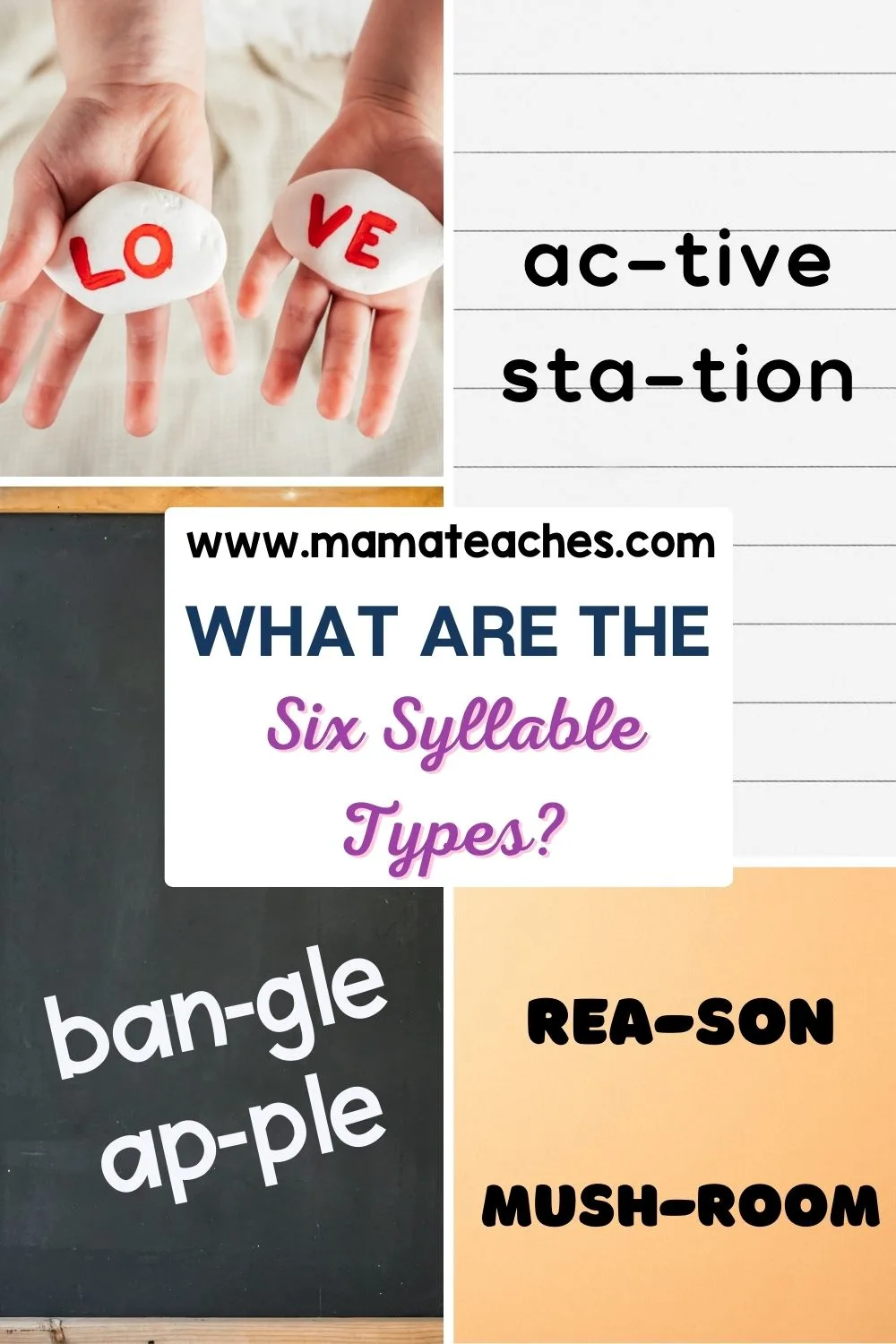
Teaching the Six Syllable Types
By teaching the six syllable types, you can help students advance their word attack skills.
They can learn to decode any word they encounter.
This will set them on the path to fluency.
